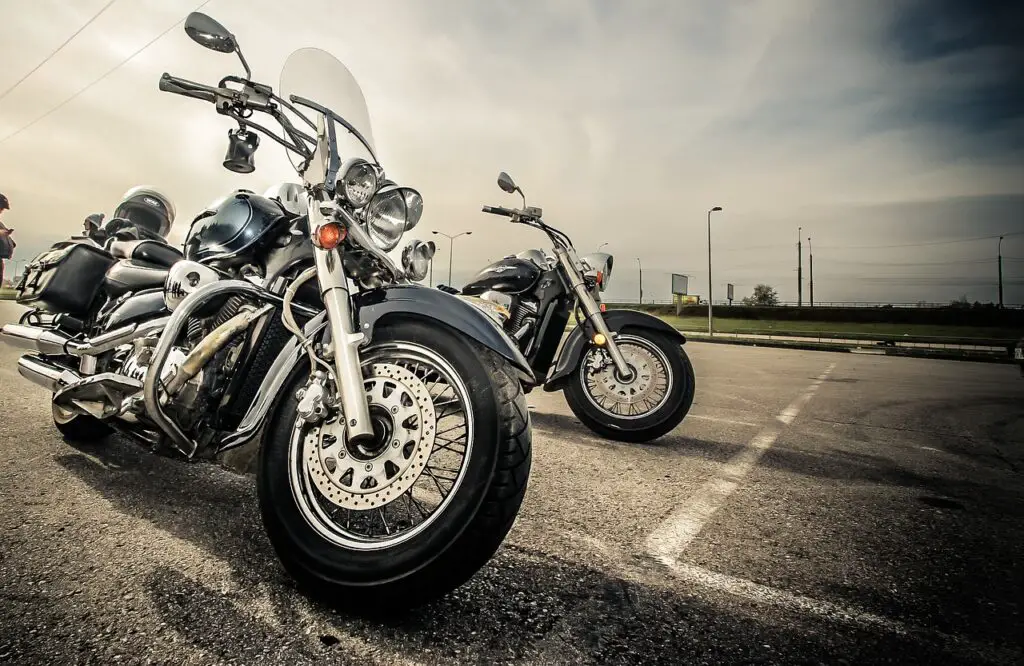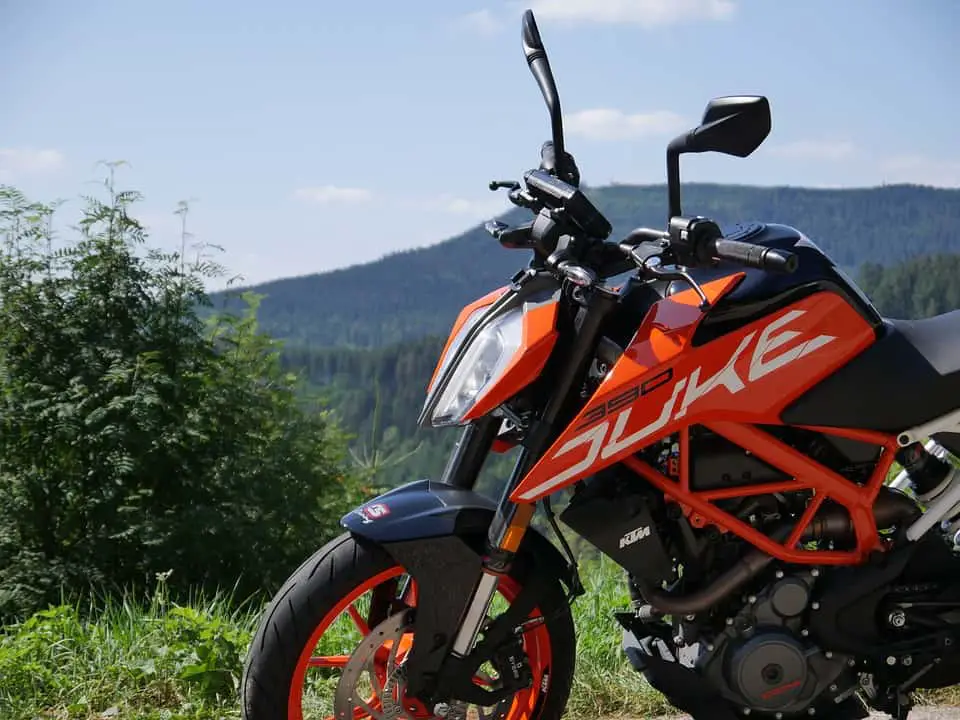All motorcycles depreciate per year, irrespective of brands, types, and models. However, some motorcycles depreciate at a better rate than the rest. Still, many variables are at play, and a few iconic, popular, or in-demand motorcycles retain a significant proportion of their original values.
Motorcycles typically depreciate at 10% to 15% annually for the first 3 years. Thereafter, the depreciation rate stabilizes at ~5% per year until a motorcycle’s value is a fraction of the original manufacturer’s suggested retail price. Nonetheless, you can reduce the depreciation rate through proper maintenance.
Identical motorcycles can depreciate differently due to condition, riding history, location, and other factors. Also, social & cultural influences and the demand in a used marketplace affect the annual depreciation. Keep reading to estimate how your motorcycle may depreciate per year.
How Motorcycles Depreciate Every Year
In economics and finance, depreciation is an accounting method of allocating the total value of a tangible asset over its expected lifespan. Thus, the annual depreciation is interpreted as how much of the asset’s total original value is utilized in a year, which is essentially the return.
The other aspect of depreciation pertains to the actual loss of value, which is generally through wear and tear or damage, hence the cost of maintenance, repair, and potential modifications or upgrades. This traditional concept & practice of depreciation is slightly tweaked for motorcycles.
Motorcycles depreciate irrespective of wear and tear, damage, and other issues leading to an actual loss of value. Like cars, the immediate depreciation of motorcycles is more about perception than anything else. For instance, a motorcycle is no longer worth the manufacturer’s suggested retail price the moment a buyer completes the purchase from a dealer.
In effect, a motorcycle instantly depreciates after you purchase and bring it home. How much you ride it, the physical condition of the motorcycle, and other factors do not matter for the first round of depreciation. This upfront depreciation can be as much as 15% for a motorcycle that is up to 1 year old. In the second year, this depreciation could be in the range of 10% to 15%.
Therefore, a $10,000 motorcycle is worth ~$9,000 immediately after purchase and up to the first 12 months. Subsequently, the motorcycle depreciates to ~$8,000 in the 2nd year. A motorcycle may be worth less than these proportionate reductions if its used condition is not impeccable.
Case Study 1: Honda CBR500R (Street – Sports Motorcycle)
The official base MSRP of the 2020 Honda CBR500R is $6,699. The Kelley Blue Book listed retail price for the same is $6,665. These prices may vary among dealers. However, a 2020 Honda CBR500R’s trade-in value is $4,595. Thus, the depreciation is ~31% in around 2 years.
Here are the listed prices & trade-in values of recent Honda CBR500Rs per Kelley Blue Book:
The trade-in values are not indicative of the private resale prices of these editions or models of Honda CBR500R made in 2018, 2019, and 2020. The depreciation could be worse than the average ~$2,000, evident from this table, for those motorcycles in undesirable condition.
Also, as you can conclude from these prices and trade-in values, the depreciation for the 2018 and 2019 models has stabilized, but the loss of value for 2020 is the starkest of the three. Such a trend is prevalent for most new motorcycles, irrespective of brand and model.
Case Study 2: Harley-Davidson FLHX Street Glide (Touring Motorcycle)
Here are the typical listing prices & trade-in values of recent Harley-Davidson Street Glides:
| Harley-Davidson Street Glide | Typical Listing Price | Trade-In Value |
| 2020 | $23,450 | $18,500 |
| 2019 | $22,590 | $17,700 |
| 2018 | $21,465 | $16,700 |
As is evident in this table, the average depreciation of the Harley-Davidson FLHX Street Glide models made in these years is ~$5,000, accounting for a little over 20% reduction in value from the manufacturer’s suggested retail price. These models are 2-4 years old at the time of writing.
Also, you can see that the 2018 model’s depreciation is less stark than 2020’s, similar to Honda’s CBR500R. Thus, you are likely to encounter the sharpest depreciation of your new motorcycle in the first and second years, followed by a modest fall in the third and nominal reduction in value subsequently. Then, the value remains somewhat stagnant from the fifth year.

Case Study 3: Insurance Companies’ Take On Motorcycle Depreciation
TIME’s favorite motorcycle insurance companies are Progressive, GEICO, Nationwide, and Markel. Money’s picks are Progressive, GEICO, Dairyland, Farmers, Allstate, and Markel. Value Penguin’s 2022 list includes Nationwide, Dairyland, Progressive, Markel, GEICO, and USAA.
I will go with Progressive for this case study because it is apparently the largest insurance company for motorcycles, bikes, and other smaller vehicles. Progressive’s comprehensive and collision coverage accounts for total loss for a new motorcycle. However, owners can avail of this benefit only if a motorcycle is 1 year old for a new policy or 2 model years for renewal.
This total loss coverage for a new motorcycle essentially offers you the full value per the manufacturer’s suggested retail price, minus any deductibles based on the selected policy. Thus, you will get the cash to purchase a new, identical motorcycle or one of the same value.
However, you cannot take advantage of this coverage if your motorcycle was manufactured more than 1 year ago for a new insurance policy. Also, an existing insurance policy being renewed for a motorcycle manufactured over 2 years ago will not have this total loss coverage.
Hence, Progressive’s full coverage for the original value of a motorcycle only for the first year with a new policy or up to the second year for renewals implies that the bike has depreciated significantly and is not eligible for the original manufacturer’s suggested retail price.
Therefore, in their own words, if a $15,000 motorcycle is worth only $10,000 after 1 to 2 years, any insured owner cannot get the former coverage for total loss. Instead, one must settle for the depreciated actual cash value at the time, which could be $10,000 as cited, a tad more or less.
What Factors Affect Motorcycle Depreciation?
The first set of factors affecting motorcycle depreciation includes brand, type, model, price, and manufacturing year. The other consequential factors are the motorcycle’s age, its condition, miles ridden, rider and accident history, upgrades, and demand.
Most modern motorcycles can last decades, subject to riding conditions and upkeep. However, many essential components will undergo significant degradation in due course, especially the moving parts. Still, replacing these components with new parts made by the original equipment manufacturer (OEM) or better upgrades can prevent any drastic depreciation of a motorcycle.
On the flip side, most motorcycles will not have much value in the long term due to a lack of demand. The enormous used marketplace offers more than sufficient options for those looking at a discretionary motorcycle purchase. Thus, a motorcycle is likely to lose more than 50% of its original value in half a decade or so. Any subsequent depreciation depends on topical factors.
A 5-year old Honda in pristine condition may have a better resale value than a more recent model that was involved in an accident. Likewise, replacement parts made by the original equipment manufacturer or better upgrades can reduce the depreciation in comparison with any custom aftermarket or unbranded components, unless the latter is undisputedly more valuable.
Which Types of Motorcycles Depreciate Faster?
Generally, sports motorcycles depreciate faster than cruisers and tourers because they are intended for hard riding and thus deteriorate more quickly. Also, motorcycles made & sold in vast numbers tend to depreciate more and sooner due to abundant availability.
Riders typically explore as much potential of a sports motorcycle as possible. Thus, sports bikes suffer more wear and tear sooner than touring motorcycles. Also, cruisers and tourers are perceived as more leisurely and therefore likely to be in better condition due to sporadic uses.
However, these general perceptions among motorcycle owners and riders may not affect every case. There are riders maintaining their sports motorcycles much better than how some may work on their tourers’ upkeep. A specific reality does not have to abide by the widespread notions. Yet, the used marketplace and trade-in values of dealers are driven by perception.
Also, the availability of a particular model influences its depreciation, irrespective of the brand and type of motorcycle. Consider any popular brand producing tens of thousands of a particular model every year, irrespective of the type of motorcycle. Such models will depreciate much faster and more significantly than motorcycles that do not have new editions every year.
Buying the latest Honda or Harley-Davidson is an obvious choice if an earlier year’s used model has only a slightly lower price. Thus, any motorcycle manufactured in a vast quantity every year will depreciate faster. Also, the depreciation will be a steep slope for the first few years.

Which Motorcycle Brands Depreciate Faster?
The motorcycle brands Honda, Yamaha, Triumph, Hyosung, and Victory depreciate faster and more significantly than the likes of Harley-Davidson and Ducati. BMW motorcycles are a mixed bag, as a few models depreciate less and relatively slower than others.
Honda is the second-largest motorcycle brand in the United States. The sheer numbers of the popular models in production and the yearly releases of newer versions make most Honda motorcycles immensely vulnerable to stark and fast depreciation.
In comparison, Harley-Davidson retains a significant portion of its original value over the years. Both Harley-Davidson and Ducati fare much better in the depreciation context. However, Honda and a few others are also known for exceptionally reliable motorcycles in several types or styles.
Triumph and Victory have had a patchy run in recent years. While Victory motorcycles are no longer in production, Triumph’s financial upheavals and relative uncertainties have adversely affected their brand value.
Hyosung is still somewhat new in the United States and thus not as trusted a brand as Harvel-Davidson. Besides, their relatively affordable prices make the motorcycles vulnerable to depreciation, both at the outset and over the years.
BMW has a rather interesting tale. The expensive motorcycles of the brand are more popular among richer riders, and they prefer to switch to a new model as soon as they can. This practice contributes to the depreciation of several models. However, the quality of BMW motorcycles and some pop culture avatars make them a fad, thus stemming their depreciation to an extent.
How Much Does a Motorcycle Depreciate in Time?
Most motorcycles depreciate by as much as 50% within the first 3 to 5 years. The resale value stabilizes for around half a decade subsequently, followed by a sharp depreciation again in the ~10th year. However, trade-in and private resale values are rarely the same.
Like cars, motorcycles will depreciate in time until there is little to no financial value except for scrap. The only exceptions are models that become a fad or attain iconic status for any reason. More often than not, these reasons are based on pop culture and social trends.
Take the examples of the Harley-Davidson FLSTF Fat Boy in Terminator 2: Judgment Day or the one Peter Fonda rode in Easy Rider, Carrie-Anne Moss’ Ducati 996 in The Matrix Reloaded, Uma Thurman’s Kawasaki ZZ-R250 in Kill Bill: Vol.1, the BMW R1150 R in Ultraviolet, or pick any of those featuring Tom Cruise, from Top Gun’s Kawasaki to Mission Impossible’s Triumph.
Whenever anything becomes a fad, not just cars or motorcycles, it becomes immune to ordinary realities like depreciation. These motorcycles have become more than a fad, as they are icons in collective memory, social nostalgia, and pop culture. While the original models used in these productions can fetch a fortune at auctions, a ripple effect benefits the brands and motorcycles.
Thus, if you wish to reduce the impact of depreciation on your motorcycle in the foreseeable future, look out for what is trendy or potentially a craze. Appreciation and depreciation depend largely on supply and demand. Hence, basic economics will script the fate of your motorcycle.
Final Thoughts
Meticulous maintenance, optimum riding, and averting accidents or unpleasant consequences can contain the natural depreciation of motorcycles. For buyers and sellers, the 3rd to 5th year phase is an opportune time to trade, as it balances a motorcycle’s financial value and condition.
